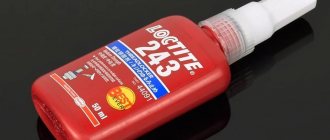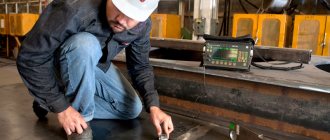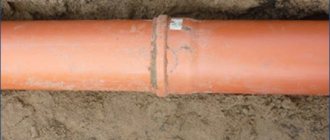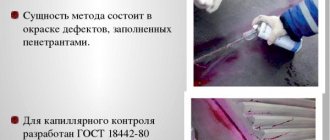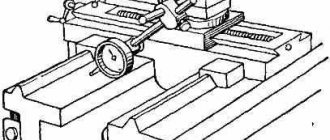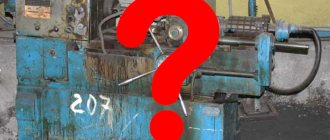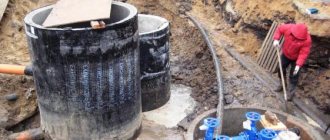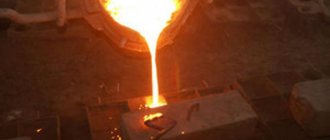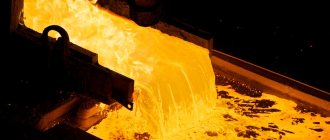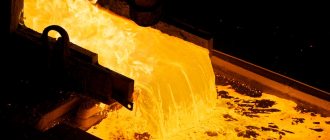Titanium is considered the strongest refractory metal that retains its ductility. It is stronger than iron and aluminum. The alloy was first obtained by a Russian scientist in 1875. In 1925, a Dutch chemist managed to obtain 99.9% pure metal. Due to its high melting point, titanium is indispensable in the space industry and aircraft construction. Lightweight, chemically neutral, it is also used in other industries.
Characteristics of titanium alloys
Several components are used to alloy titanium:
- Aluminum is the most common additive. It increases specific strength, elasticity, and creep resistance.
- Tin slows down oxidation when heated, increases ductility and weldability.
- Thanks to zirconium, Ti-Al-Zr is deformable at room temperature.
- Manganese increases the ability to deform.
- Silicon improves crack resistance.
- Vanadium – weldability.
- The Ti-Al-Mo-Cr-Fe-Si system is highly durable. This is a martensitic metal.
- Molybdenum increases the heat resistance of titanium.
Pure titanium has a tensile strength of up to 450 MPa, alloying additives can increase it to 2000 MPa. When titanium cools, its flexural strength increases. At room temperature it is 700 MPa, around -200°C it increases to 1100 MPa.
Physical properties
Main characteristics of titanium:
- temperatures: melting 1668 degrees Celsius, boiling – 3227;
- yield strength: from 250 to 380 MPa;
- elasticity – 110 GPa, varies in different directions;
- the average hardness of alloys according to HB is 103;
- density: at room temperature 4500 kg/m3, at melting point - 4120 kg/m3;
- heat capacity – 531 J per kilogram when heated by a degree;
- thermal conductivity – 18 W/(m deg);
- resistivity – 42.1·10-6 Ohm·cm.
When cooled to 3.8°K (-270°C), the metal becomes a superconductor.
Chemical properties
In the solid state, Ti is chemically stable and does not oxidize in high humidity, marine atmosphere, or in contact with aggressive environments. When heated to the melting point, it becomes active. Interacts with all air components:
- oxygen, solid oxides are formed;
- nitrogen, it strengthens the structure, increases the tensile strength, the critical concentration is 0.2%, above this indicator the metal becomes brittle;
- hydrogen degrades technological properties;
- carbon increases the temperature of phase changes.
When heated to the melting point, the metal must be insulated.
Metal structure
In appearance, the metal most closely resembles steel, but its mechanical qualities are higher. At the same time, titanium is lightweight - molecular weight 22. The physical properties of the element have been studied quite well, but they strongly depend on the purity of the metal, which leads to significant deviations.
In addition, its specific chemical properties are important. Titanium is resistant to alkalis and nitric acid, and at the same time reacts violently with dry halogens, and at higher temperatures with oxygen and nitrogen. Even worse, it begins to absorb hydrogen at room temperature if there is an active surface. And in the melt it absorbs oxygen and hydrogen so intensely that the melting has to be carried out in a vacuum.
Another important feature that determines physical characteristics is the existence of 2 phases of the state.
- Low temperature - α-Ti has a hexagonal close-packed lattice, the density of the substance is 4.55 g / cubic meter. cm (at 20 C).
- High temperature - β-Ti is characterized by a body-centered cubic lattice, the phase density is correspondingly lower - 4.32 g / cubic meter. see (at 900C).
The phase transition temperature is 883 C.
Under normal conditions, the metal is covered with a protective oxide film. In its absence, titanium poses a great danger. Thus, titanium dust can explode, the temperature of such an explosion is 400C. Titanium shavings are a fire hazardous material and are stored in a special environment.
Next, we will consider the magnetic, mechanical, chemical and physical properties of titanium, its alloys and their applications.
The video below explains the structure and properties of titanium:
Titanium casting
During heating to the melting temperature, titanium actively reacts with air components.
To prevent this from happening, the air in the furnaces was pumped out and a vacuum was created. The remaining air began to be replaced by inert gases: a mixture of argon and helium. In industrial foundry installations, the residual pressure of inert gases ranges from 1.33 to 0.13 Pa.
Several technologies have been developed:
In a vacuum chamber, the metal is melted and poured into molds. It is cooled to a temperature when the metal loses its chemical activity and forms a crystalline structure.
The method of vacuum casting (MVL) using lost wax models involves the use of lost wax or burnt out molds. A fire-resistant shell is created on the surface of the model. The castings are obtained in the most approximate shape.
Shell casting technology involves the use of thin-walled split molds. They are placed on a heated model plate to be coated with thermoactive resin. Filling is done vertically and horizontally.
The temperature regime for cooling the castings is specially developed. Uniform structuring is provided throughout the entire volume so that internal stresses do not arise in the casting.
Advantages/disadvantages
- Advantages:
- low density (4500 kg/m 3 ) helps reduce the weight of manufactured products;
- high mechanical strength. It is worth noting that at elevated temperatures (250-500 °C) titanium alloys are superior in strength to high-strength aluminum and magnesium alloys;
- unusually high corrosion resistance due to the ability of Ti to form thin (5-15 μm) continuous films of TiO2 oxide on the surface, firmly associated with the mass of the metal;
- the specific strength (the ratio of strength and density) of the best titanium alloys reaches 30-35 or more, which is almost twice the specific strength of alloy steels.
- Flaws:
- high production cost, Ti is much more expensive than iron, aluminum, copper, magnesium;
- active interaction at high temperatures, especially in the liquid state, with all gases that make up the atmosphere, as a result of which Ti and its alloys can only be melted in a vacuum or in an environment of inert gases;
- difficulties in involving titanium waste into production;
- poor antifriction properties due to Ti adhesion to many materials; titanium paired with titanium cannot work on friction at all;
- high susceptibility of Ti and many of its alloys to hydrogen embrittlement and salt corrosion;
- poor machinability, similar to the machinability of austenitic stainless steels;
- high chemical activity, tendency to grain growth at high temperatures and phase transformations during the welding cycle cause difficulties in welding titanium.
A.A. Shcherbakov. "Pilots, planes, tests"
| Table of contents |
Winged metal titanium
In the sixties, titanium began to be used in the production of aircraft engines. This metal had advantages over steel in terms of specific gravity, mechanical properties and thermal strength. Its use in engines made it possible to reduce their specific weight. But its use required some technological and design innovations: in addition to useful qualities, it had a low combustion temperature; when ignited, it turned into a terrible destructive force. If there was a fuel fire on the plane, the combustion temperature reached a little over 1000. Such a fire gave the crew time to detect it and apply extinguishing measures or abandon the aircraft. When titanium burns, the temperature reaches 3000. The flames of such a fire cut through the structure like a heated knife through butter. The destruction is happening so rapidly that the crew finds itself in an extremely difficult situation. Under normal conditions, titanium cannot ignite, even when it reaches the combustion temperature; it requires too much oxygen to burn. But in a jet engine, in which the compressor is made of titanium, the temperature is quite high, and there is more than enough oxygen: hundreds of cubic meters of air per second pass through the compressor. If, due to a decrease in the gap between the compressor blades and the housing, even a slight touch or a very slight scratching occurs, then it’s better not to say anything! Burning titanium is a volcano inside a jet engine. Here's how it happened in practice. An emergency commission has been sent to the Siberian plant. The Su-24 acceptance test program provides for a “squeeze” in speed. This means that at an altitude of 1000 meters you need to get a speed of 1400 kilometers per hour. A special route has been set aside for this so that supersonic impacts do not disturb residents of nearby villages. During this regime, the crew ejected. The pilot landed normally. The navigator's leg was torn off up to the hip, and he died from shock and blood loss. The pilot could not understand or tell how and what happened. Residents of a village located not far from the highway, who often saw planes flying along it, did not even recognize the plane this time. They said that some kind of fiery barrel was rolling across the sky. During the investigation process, a “layout” of parts brought from the crash site is made. An outline of the aircraft is drawn on the concrete floor of the hangar and debris is placed on it according to its position on the aircraft. The commission members examine the details with surprise and bewilderment. The massive spar at one end looked quite normal, but at the other it looked like a washcloth. This is what a titanium flame can do to metal. A wing console was found with traces of blood and human flesh. It was she who tore off the navigator's leg. But she was behind the trajectory of the ejection seat. No one could understand how this could happen. Even during Khrushchev’s time, combat aircraft were cut using electric welding. Beautiful new cars, having lost the connection and support between their parts, turned into piles of scrap metal. What if this happens in the air at a speed of 1400 kilometers per hour? No computers, no modeling can predict or explain in this case the movement of aircraft parts. This is what a titanium fire is in flight. In this case, it was recorded completely reliably. Unfortunately, the described case was not the only one. At LII, pilot Alexander Andreevich Muravyov, on a plane with the same engine as the Su-24, performed a high-speed landing. And suddenly!.. A completely unthinkable movement of the plane. Muravyov knew well all conceivable types of movement, up to and including the corkscrew. But then something incredible happened: the plane seemed to somersault over its head. Alexander managed to eject safely. A titanium fire was also installed. Another titanium fire was the cause of the crash of an experienced MiG-29. Fortunately, Valery Menitsky was also able to eject. Subsequently, engine designers found safe ways to use titanium, and now it behaves quite loyally in aircraft engines.
| << Flights to America on ANT-25 | More about record flights >> |
Finding titanium in nature
Titanium occupies an honorable fourth place in terms of content in the earth's crust among metals important for humans, second only to iron, magnesium and aluminum. Its maximum amount is concentrated in the lower, basalt layer, and slightly less in the granite layer. Taking into account the high chemical activity, it is not possible to find titanium in its pure form. The most common are tetravalent oxides, which are concentrated in weathering crust ores and in marine clay.
Today there are up to 75 titanium minerals, and scientists periodically announce the discovery of new forms and compounds. For industrial processing, the following are of greatest importance:
- Ilmenite.
- Leucoxene (an alteration product of ilmenite).
- Rutile.
- Titanite (sphene).
- Perovskite.
- Anataz.
- Titanomagnetite.
- Brookite.
Titanium is a weak migrant; it can only be transported in the form of mechanical fragments of rock or during the movement of colloidal silty layers of reservoirs. The biosphere is characterized by the content of maximum quantities of this metal in seaweed; in animals it is found in wool and horny tissues; in the human body it is present in the thyroid gland, spleen, adrenal glands and placenta.
Method of obtaining from raw materials
The starting raw material is titanium dioxide, which contains few foreign impurities. To do this, you need a rutile concentrate obtained by ore enrichment. But its global reserves are small, and titanium slag (synthetic rutile) is more often used, which is obtained by heat treatment - enrichment of ilmenite concentrates in an electric arc furnace. As a result, iron in the form of cast iron is collected at the bottom of a special bath, and a gray powder remains - slag containing titanium oxide. It is crushed, mixed with coal, briquetted and chlorinated in furnaces, where titanium tetrachloride vapors are formed at 800 °C in the presence of carbon.
Then they are purified and reduced with magnesium in special reactors at 950 °C. A sintered porous mass, a titanium sponge, is formed on the walls, which is calcined in a vacuum to separate it from magnesium compounds. To produce titanium ingots, the resulting sponge is melted in vacuum arc furnaces. This protects the metal from oxidation and contributes to the final release of impurities. Finished ingots with a purity of up to 99.7% are used for pressure processing (rolling, stamping, forging).
Properties and characteristics of titanium
Titanium today is the strongest among all existing technical materials, therefore, despite the difficulty of obtaining and high safety requirements for the production process, it is used quite widely. The physical characteristics of the element are quite unusual, but are very dependent on purity. Thus, pure titanium and alloys are actively used in rocket and aircraft construction, but technical titanium is unsuitable because due to impurities it loses strength at high temperatures.
Metal density
The density of a substance varies depending on temperature and phase.
- At temperatures from 0 to the melting point it decreases from 4.51 to 4.26 g/cubic meter. cm, and during the phase transition it increases by 0.15%, and then decreases again.
- The density of liquid metal is 4.12 g/cubic. cm, and then decreases with increasing temperature.
Melting and boiling points
The phase transition divides all the properties of the metal into qualities that the α- and β-phases can exhibit. Thus, density up to 883 C refers to the qualities of the α-phase, and melting and boiling points refer to the parameters of the β-phase.
- The melting point of titanium (in degrees) is 1668+/-5 C;
- The boiling point reaches 3227 C.
At what temperature does titanium melt?
Titanium is considered the strongest refractory metal that retains its ductility. It is stronger than iron and aluminum. The alloy was first obtained by a Russian scientist in 1875. In 1925, a Dutch chemist managed to obtain 99.9% pure metal. Due to its high melting point, titanium is indispensable in the space industry and aircraft construction. Lightweight, chemically neutral, it is also used in other industries.
Deposits of space material
The most common are ilmenite deposits, they amount to about 800 million tons. The reserves of rutile ores are much smaller, but if production continues to grow, all of them can provide humanity for another 100 years. In terms of titanium reserves, Russia is second only to China and has 20 explored deposits. Most of them are complex, where iron, phosphorus, vanadium and zirconium are also mined. Today, the Russian metallurgical industry is considered the world's largest titanium producer.
Extensive deposits are located in South Africa, Ukraine, Canada, the USA, Brazil, Australia, Sweden, Norway, Egypt, Kazakhstan, India and South Korea. They differ in the metal content in the ores and production volumes; geological surveys do not stop. Even on the Moon, reserves of titanium-containing ores have been discovered, some of them tens of times richer than large deposits on Earth. This allows us to hope for a reduction in market prices for the metal and an expansion in the scope of its use.
